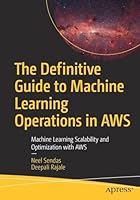
Spatial Cloud Computing: A Practical Approach
- Length: 357 pages
- Edition: 1
- Language: English
- Publisher: CRC Press
- Publication Date: 2013-12-04
- ISBN-10: 1466593164
- ISBN-13: 9781466593169
- Sales Rank: #6640291 (See Top 100 Books)
An exploration of the benefits of cloud computing in geoscience research and applications as well as future research directions, Spatial Cloud Computing: A Practical Approach discusses the essential elements of cloud computing and their advantages for geoscience. Using practical examples, it details the geoscience requirements of cloud computing, covers general procedures and considerations when migrating geoscience applications onto cloud services, and demonstrates how to deploy different applications.
The book discusses how to choose cloud services based on the general cloud computing measurement criteria and cloud computing cost models. The authors examine the readiness of cloud computing to support geoscience applications using open source cloud software solutions and commercial cloud services. They then review future research and developments in data, computation, concurrency, and spatiotemporal intensities of geosciences and how cloud service can be leveraged to meet the challenges. They also introduce research directions from the aspects of technology, vision, and social dimensions.
Spatial Cloud Computing: A Practical Approach
a common workflow for deploying geoscience applications and provides references to the concepts, technical details, and operational guidelines of cloud computing. These features and more give developers, geoscientists, and IT professionals the information required to make decisions about how to select and deploy cloud services.
Table of Contents
Part I: Introduction to Cloud Computing for Geosciences
Chapter 1: Geoscience Application Challenges to Computing Infrastructures
Chapter 2: Cloud Computing Architecture, Concepts, and Characteristics
Chapter 3: Enabling Technologies
Part II: Deploying Applications onto Cloud Services
Chapter 4: How to Use Cloud Computing
Chapter 5: Cloud-Enabling Geoscience Applications
Chapter 6: How to Choose Cloud Services: Toward a Cloud Computing Cost Model
Part III: Cloud-Enabling Geoscience Projects
Chapter 7: ArcGIS in the Cloud
Chapter 8: Cloud-enabling GEOSS Clearinghouse
Chapter 9: Cloud-enabling Climate@Home
Chapter 10: Cloud-Enabling Dust Storm Forecasting
Part IV: Cloud Computing Status and Readiness
Chapter 11: Cloud Services
Chapter 12: How to Test the Readiness of Cloud Services
Chapter 13: Open-Source Cloud Computing Solutions
Chapter 14: How to Test the Readiness of Open-Source Cloud Computing Solutions
Chapter 15: GeoCloud initiative
Part V: Future Directions
Chapter 16:Handling Intensities of Data, Computation, Concurrent Access, and SPATIOTEMPORAL PATTERNS
Chapter 17:Cloud Computing Research for Geosciences and Applications

Full-Stack JavaScript Strategies: The Hidden Parts Every Mid-Level Developer Needs to Know

Securing an Enterprise: Maximizing Digital Experiences through Enhanced Security Measures





